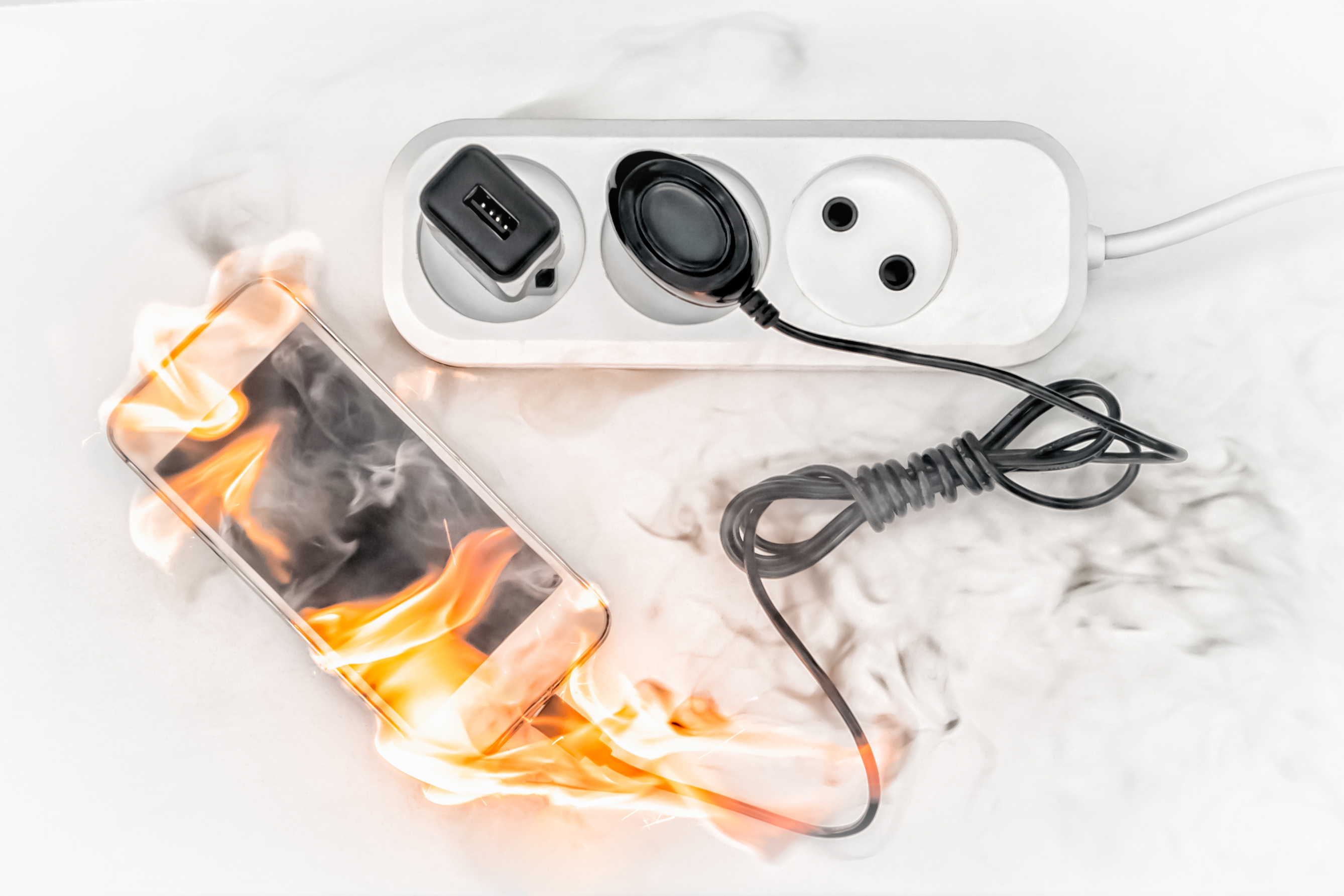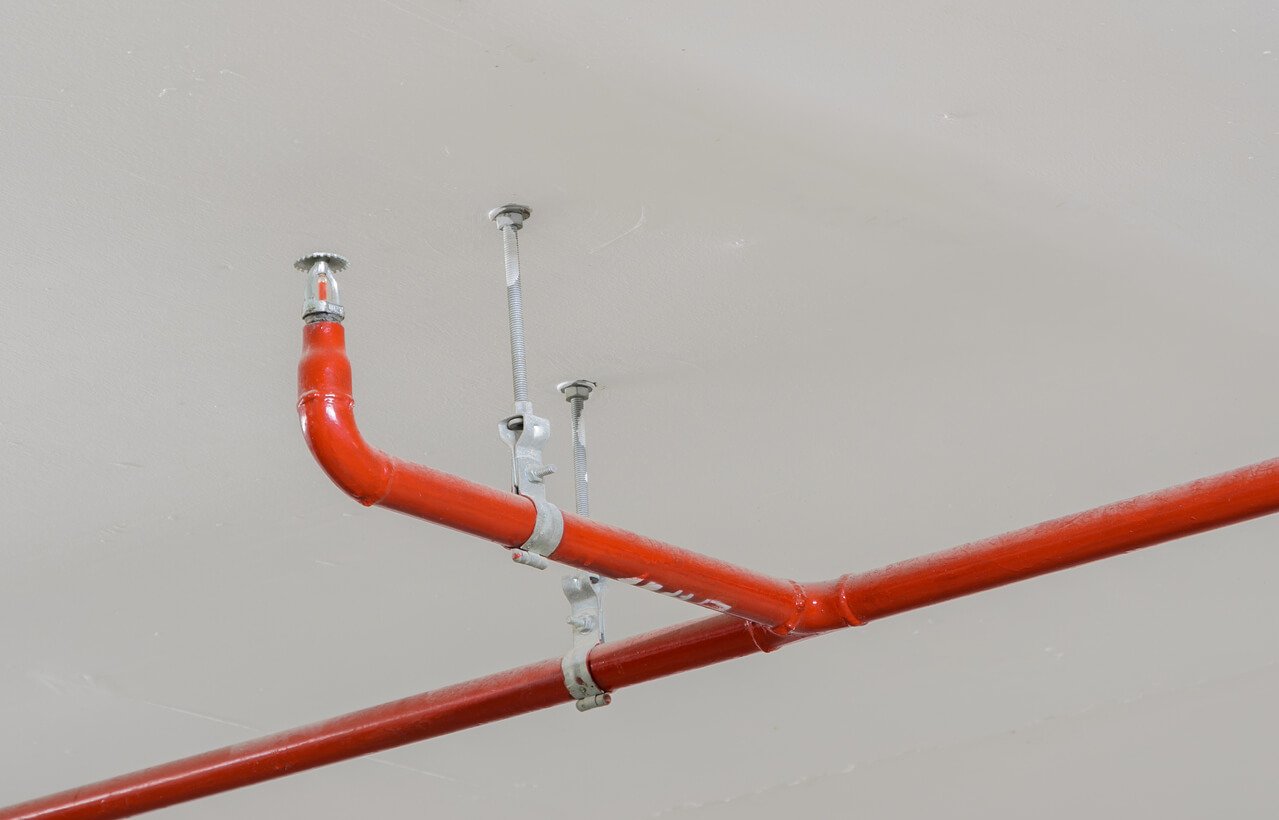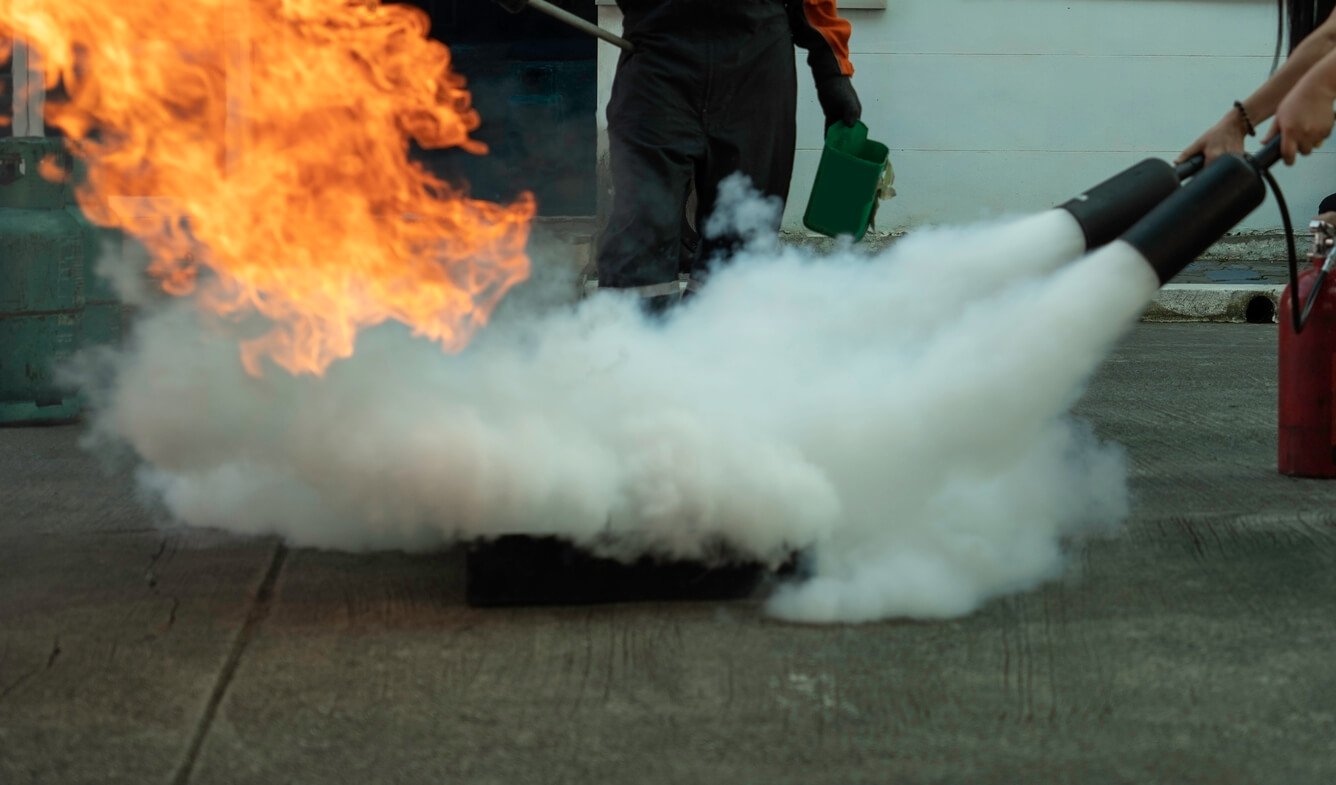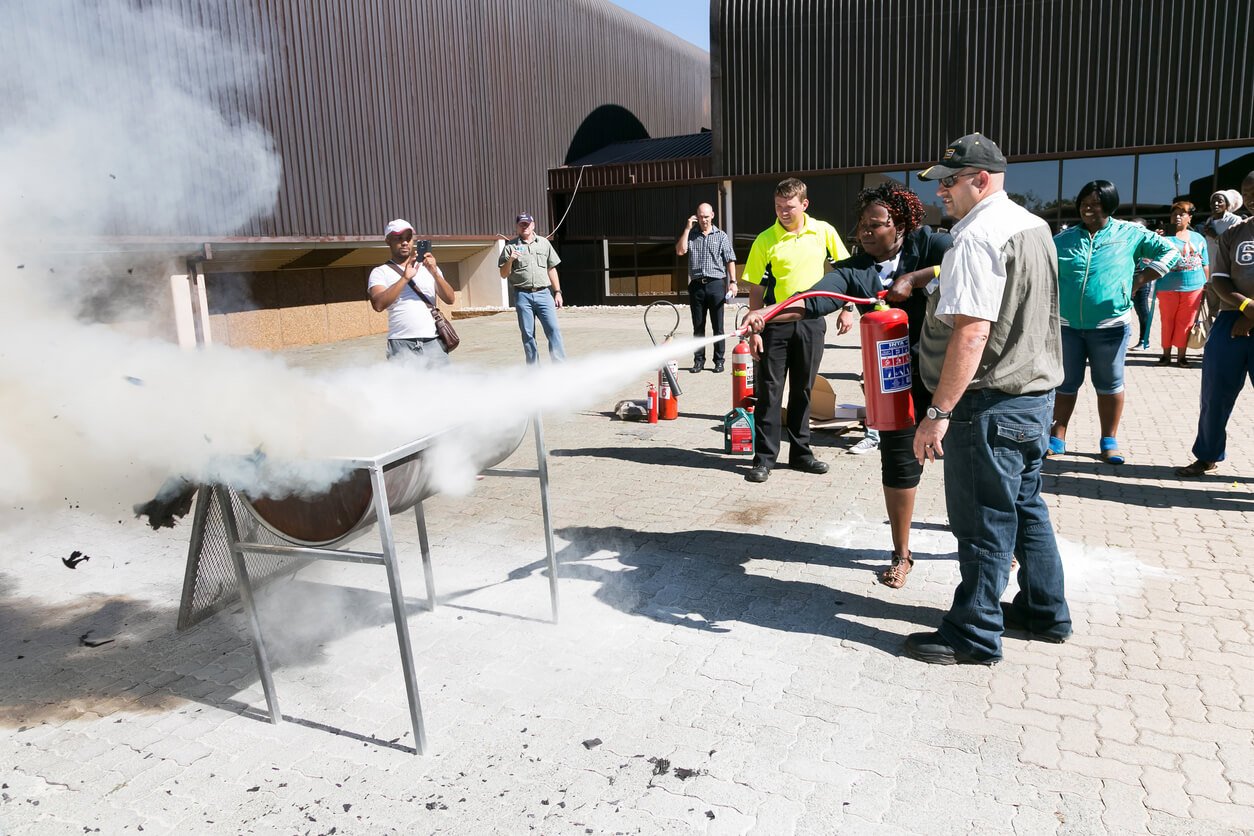Why Standard Fire Blankets Can't Handle Lithium Battery Fires
Regular fire blankets fail against lithium battery fires due to three critical weaknesses: temperature limitations (breaking down at 900°C while lithium fires exceed 1300°C), lack of gas-sealing capabilities that allow toxic fumes to escape, and inability to prevent re-ignition since thermal runaway continues underneath the blanket.
Lithium-ion battery fires are a growing concern.
Based on data from the New York City Fire Department, lithium-ion battery fires grew 3.5% year over year.
But the challenge extends beyond just the frequency of incidents—it involves understanding why traditional fire suppression methods, including conventional fire blankets, often prove inadequate against the unique characteristics of lithium-ion battery fires.
Building owners who rely on standard fire safety equipment may find themselves unprepared for the extreme temperatures, toxic gas emissions, and re-ignition potential that lithium battery fires present.
Understanding the limitations of regular fire blankets against lithium-ion batteries is critical for making informed decisions about fire protection systems that can actually protect your investment and ensure compliance with evolving safety standards.
Key Takeaways
- Regular fire blankets fail against lithium battery fires due to inadequate temperature resistance (900°C limit vs 1300°C+ fire temperatures) and inability to contain toxic gas emissions
- Thermal runaway creates self-sustaining fires that generate their own oxygen supply, making traditional oxygen-removal suppression methods completely ineffective
- Specialized lithium fire blankets offer superior protection with 1300°C+ temperature resistance and 90% gas-sealing efficiency for safe containment and evacuation time
- Professional risk assessment is essential as building layout, occupancy type, and local codes all influence the optimal fire protection strategy for your specific facility
The Science Behind Lithium Battery Fire Suppression
Lithium-ion battery fires represent a fundamentally different fire safety challenge than conventional fires, primarily due to a destructive process called thermal runaway.
This creates a self-sustaining chain reaction where excessive heat triggers uncontrolled chemical processes within the battery cell, causing temperatures to exceed 1000°C (1832°F)—significantly higher than typical building fires.
The toxic gas emissions pose the most immediate danger to building occupants. These fires produce hydrogen fluoride, carbon monoxide, and other hazardous compounds that can spread through a building's ventilation system.
Large amounts of hydrogen fluoride may be generated, ranging between 20 and 200 mg/Wh of nominal battery energy capacity, with concentrations reaching levels that greatly exceed safe exposure limits.
Most critically for fire suppression, thermal runaway generates its own oxygen supply. Unlike traditional fires that depend on surrounding air, lithium battery fires continue burning even when completely sealed off from external oxygen sources. This fundamental difference renders standard fire suppression approaches—designed to remove oxygen, heat, or fuel—largely ineffective against these types of fires.
For comprehensive guidance on lithium battery fire suppression methods, our detailed analysis of lithium battery fire suppression provides building owners with expert insights into effective suppression strategies.
Why Regular Fire Blankets Fall Short Against Lithium Battery Fires
Given what we know about thermal runaway, regular fire blankets face three critical failure points when used against lithium battery fires.
First, they can't handle the extreme temperatures. Standard fiberglass fire blankets are designed for kitchen fires that reach 600-800°C. They begin to break down at around 900°C, with protective coatings failing even sooner. Since lithium battery fires routinely exceed 1000°C and can peak above 1300°C, conventional blankets simply melt or become brittle when exposed to these conditions.
Second, regular fire blankets lack gas-sealing capabilities. They're designed with a loose weave that allows some air circulation, which works fine for standard fires.
However, this design allows toxic fumes and gases like hydrogen fluoride and carbon monoxide to escape around the edges and through the fabric itself. Building occupants remain exposed to dangerous fumes that can spread throughout your facility's ventilation system.
Third, the re-ignition problem creates a dangerous false sense of security. A regular fire blanket might temporarily suppress visible flames, giving the impression that the fire is under control.
However, the thermal runaway process continues underneath the blanket. When you remove the blanket or it eventually degrades from heat exposure, the fire reignites with full intensity—often catching responders off guard and allowing the fire to spread to other areas of your building.
These limitations make regular fire blankets not just ineffective, but potentially hazardous when used on lithium battery fires.
Specialized Fire Blankets vs. Traditional Fire Suppression Methods
Professional-grade lithium battery fire blankets address each of the failure points we've identified.
These specialized blankets can help isolate lithium battery fires because they can withstand sustained extremely high temperatures exceeding 1300°C and provide gas-sealing efficiency of 90% or higher. They're manufactured from high-performance materials like high-silica fabric with ceramic coatings, specifically engineered for lithium fire containment.
The key difference is their approach: instead of trying to extinguish the fire, they focus on containment and isolation.
Specialized lithium blankets can maintain their integrity for hours, giving you time to safely evacuate occupants while preventing the fire from spreading to other areas of your building. They also significantly reduce toxic gas emissions, protecting building occupants from the immediate health risks.
Traditional fire extinguishers present similar challenges to regular fire blankets. Standard ABC or dry chemical extinguishers may create a temporary suppression effect, but they don't interrupt the thermal runaway process.
Water-based systems can actually worsen the situation by increasing toxic gas production and creating electrical hazards in commercial environments.
The most effective solutions combine multiple approaches tailored to your specific risks.
Building owners need professional assessment to determine the right combination of specialized equipment for their facilities. This might include lithium-specific fire blankets for smaller devices, clean agent suppression systems for critical areas, and comprehensive emergency response procedures.
Emergency Response: When Professional Controlled Burnout is Necessary
In some lithium battery fire situations, fire departments may determine that controlled burnout is the safest approach. This involves isolating the burning battery in a safe outdoor location and allowing it to burn completely while monitoring for spread and toxic gas exposure. Building owners should never attempt this themselves—thermal runaway can last for hours and requires professional oversight.
Your emergency response should focus on immediate evacuation, calling 911, and isolating the area. Do not attempt to move burning lithium batteries or use regular fire suppression equipment. If possible, move undamaged batteries away from the fire source. Fire departments have specialized equipment and training to determine whether suppression or controlled burnout is the appropriate response based on the specific circumstances.
Protect Your Commercial Property With Expert Fire Safety Solutions
The evidence is clear: regular fire blankets cannot effectively protect against lithium battery fires due to temperature limitations, lack of gas-sealing capabilities, and the re-ignition factor.
The complexity of lithium battery fire protection demands professional expertise. Factors such as building layout, occupancy type, battery exposure levels, and local code requirements all influence the optimal fire protection strategy for your facility. A qualified fire protection professional can assess your specific risks and recommend solutions that provide effective protection while meeting regulatory requirements.
Contact our fire protection experts today to schedule a comprehensive assessment of your lithium battery fire risks and learn about specialized suppression solutions for your building.






